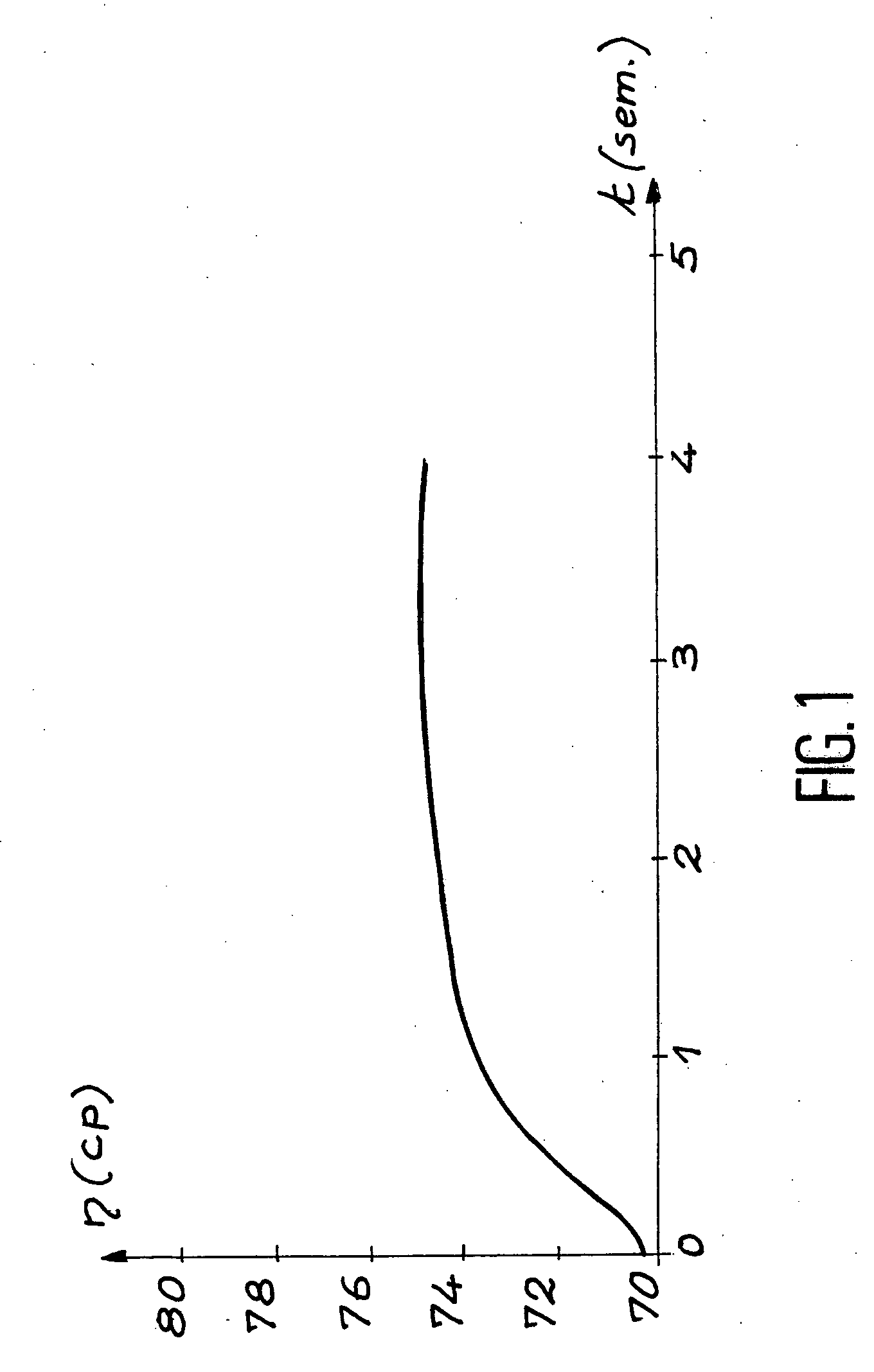Method of preparing a stable lead zircon-titanate sol and method for preparing films based on same
a technology of stable lead zircontitanate and sol, which is applied in the field of preparing stable lead zircontitanate sol and preparing films based on same, can solve the problems of poor quality of films, inability to obtain thin films of repeatable and reproducible performance from them, and inability to find the application of the mode of preparation in the industrial production of electronic devices
- Summary
- Abstract
- Description
- Claims
- Application Information
AI Technical Summary
Benefits of technology
Problems solved by technology
Method used
Image
Examples
example 2
[0076] This example illustrates the preparation of a film of PZT by deposition on a substrate of three layers of the previously prepared sol. The substrate chosen is a silicon wafer, oriented [111], 12.5-15 cm in diameter, the said wafer being metallized by cathode sputtering of a layer of platinum of thickness from 100 nm to 200 nm serving as lower electrode. The deposition technique used in this example is spin-coating, which permits adjusting, for a sol of given concentration, the deposited thickness by choosing the suitable rotation speed of the device. Deposition is effected in a dust-free zone in order to limit the presence of particulate inclusions in the films and in a conditioned environment (temperature and relative humidity controlled) in order to guarantee the reproducibility of the evaporation conditions.
[0077] The sol, diluted to 20% PZT per unit mass, is filtered on a 0.2 .mu.m filter before deposition on the wafer. The speed of rotation is adjusted to 4,000 rpm to ef...
example 3
[0083] In this example, the reproducibility was studied of the method of formation of PZT-based films.
[0084] In order to show the reproducibility of the dielectric performance of films obtained from mixed sols, according to the above example, 4 trials were carried out from 4 sols prepared according to the described method, under the same operating conditions according to examples 1 and 2. The films obtained result from a stacking of three deposited layers on a silicon wafer.
[0085] The results are shown in the following table.
1 Dielectric Trial Film thickness Capacity (nF / mm.sup.2) constant number (in nm) at OV / 1kHz at OV / 1kHz 1 195 37.2 816 2 195 38.4 846 3 190 36.9 813 4 195 37.3 821
[0086] It is seen from these results that the film thicknesses obtained under the same deposition conditions of sols prepared in the same way are similar for these 4 trials, and that the dielectric performances are very comparable.
[0087] Hence this method, because of its reproducibility, is completely c...
PUM
| Property | Measurement | Unit |
|---|---|---|
| temperature | aaaaa | aaaaa |
| temperature | aaaaa | aaaaa |
| dielectric constants | aaaaa | aaaaa |
Abstract
Description
Claims
Application Information
 Login to View More
Login to View More - R&D
- Intellectual Property
- Life Sciences
- Materials
- Tech Scout
- Unparalleled Data Quality
- Higher Quality Content
- 60% Fewer Hallucinations
Browse by: Latest US Patents, China's latest patents, Technical Efficacy Thesaurus, Application Domain, Technology Topic, Popular Technical Reports.
© 2025 PatSnap. All rights reserved.Legal|Privacy policy|Modern Slavery Act Transparency Statement|Sitemap|About US| Contact US: help@patsnap.com

